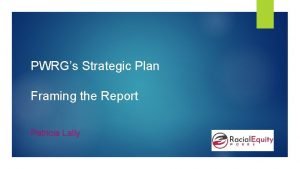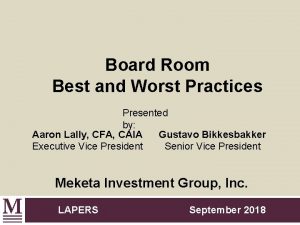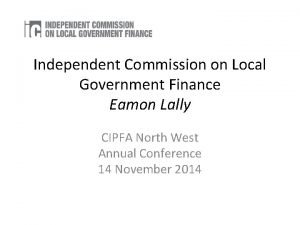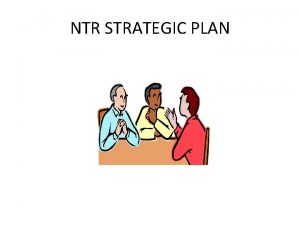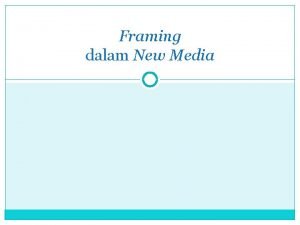PWRGs Strategic Plan Framing the Report Patricia Lally












- Slides: 12

PWRG’s Strategic Plan Framing the Report Patricia Lally

The Pieces From this year and a half journey, how do we sum up this effort? What are the over-arching truths? What are the systems most in need of overhaul? Who is most impacted and why? How should we organize and prioritize the recommendations?

The Tenor How will the report be most impactful and for whom? How will the report honor the thousands in our communities who are living in poverty? Do we center Communities or Institutions? Is this a political or organizing document? What does your collective voice sound like?

My Experience I wrote an policy white paper as directed by the agency. Did not include an executive summary, filled with data and findings, lacked the spirt of community. Presented to and rejected by the Ad hoc Committee members volunteered to edit and, in some cases, re-write sections. The result: a powerful document, one that calls-out institutional racism, the status quo and honors those most impacted.

Some examples: First paragraph of Executive Summary: Black people are more likely than White people to experience homelessness in the United States, including in Los Angeles County. In 2017, Black people represented only 9% of the general population in Los Angeles County yet comprised 40% of the population experiencing homelessness. The impact of institutional and structural racism in education, criminal justice, housing, employment, health care, and access to opportunities cannot be denied: homelessness is a byproduct of racism in America.

Called-out the Toolkit that Guided the Process As part of the Toolkit process, the Committee adopted a racial equity outcome to guide its work: Eliminate racial disparities impacting Black people experiencing homelessness by ensuring racial equity within the homeless crisis response system.

The Use of the Toolkit Advances Racial Equity To guide its work, the Committee adopted the use of a Racial Equity Toolkit, a process and set of questions designed to guide, inform, and assess how policies, programs, and budgetary decisions burden and/or benefit Black people experiencing homelessness. The Toolkit process is briefly outlined below. The use of the Toolkit promotes racial equity by: • Listening to the voices of those most impacted—people with lived experience of homelessness, as well as those directly serving them—to understand how policies, programs, and services within the homeless service delivery system and other intersecting systems benefit or burden Black people experiencing homelessness; • Raising awareness of racial justice issues for those providing services and community members; . .

Called Out Key Insights Key insights that emerged from the Committee’s work include the following: • For lasting change to occur, institutional barriers across agencies and mainstream systems must be dismantled to eliminate the racial disparities and systemic racism affecting Black people experiencing homelessness. • The mounting affordable housing crisis in the state and in the Los Angeles region, paired with persistently low, stagnant, and declining wages, exacerbates homelessness and particularly affects Black people. • The interconnectedness of incarceration and homelessness creates a revolving door that only serves to make the plight of homelessness more challenging and complex. • Black people experiencing homelessness have disproportionately high rates of child welfare system involvement.

Identification of Topic Areas The following section summarizes the key insights that emerged from the Committee’s examination of upstream systems that contribute to the overrepresentation of Black people in the population experiencing homelessness. As outlined below, the Committee focused attention on understanding the impacts of: structural and institutional racism, discrimination, and implicit bias; cost of living and lack of employment opportunities; criminal justice system involvement and re-entry; and foster care and child welfare system involvement. The Committee examined these issues both by reviewing existing research and data analysis, and by learning from the expert voices of those involved in these systems, through listening sessions and focus groups.

The First Topic Structural and Institutional Racism, Discrimination, and Implicit Bias In response to the question “Why do you think Black people are overrepresented in the homeless population? ” community listening session participants overwhelmingly identified generations of racism as the root cause of homelessness.

Recommendations Related to Systemic Racism • Shift the paradigm in the approach to funding and serving people experiencing homelessness to focus on systemic challenges and inequities, rather than individual challenges, and to acknowledge the current crisis and disparities as a product of decades of systemic issues and structural racism. Acknowledge that solutions will require sustained support and funding over an extended period to course-correct. • Develop and launch a racial equity initiative at LAHSA to further its commitment to advance racial equity within its workforce and within the homeless crisis response system. • Enhance and require ongoing trainings for relevant provider, LAHSA, City, and County staff in areas such as implicit bias, cultural competency, and the history and impacts of racism and discrimination against Black people.

My Recommendation Create a report with an strong, compelling executive summary (this may be the only part of the report that is read). Boil down the report to the most essential, critical topics/issues. Highlight key insights. Limit the number of recommendations to those that either 1) improve an existing program (downstream) or policy or 2) dismantle institutional racism while seeking system change (upstream). Include an accountability section.
 Patricia lally
Patricia lally Longitudinal framing and transverse framing
Longitudinal framing and transverse framing Chapter 10 floor framing answers
Chapter 10 floor framing answers Double bottom plate framing
Double bottom plate framing Aaron lally meketa
Aaron lally meketa Eamon lally
Eamon lally Food web of the taiga
Food web of the taiga Butterfly roof framing plan
Butterfly roof framing plan Strategic fit vs strategic intent
Strategic fit vs strategic intent Strategic complement
Strategic complement Strategic management and strategic competitiveness
Strategic management and strategic competitiveness Cultural aspects of strategy choice
Cultural aspects of strategy choice Hình ảnh bộ gõ cơ thể búng tay
Hình ảnh bộ gõ cơ thể búng tay
